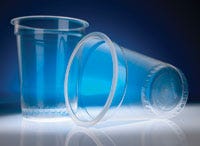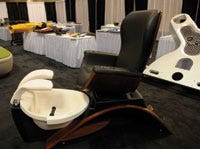On processors minds: “How sustainable is sustainability?”
You cannot attend a conference or convention anymore without hearing a lot of talk about sustainability. But while the talk in presentations tends to be overly optimistic, privately processors share their doubts about the durability of the sustainability trend. Many reckon sustainable materials are a “niche” market, destined to remain a ‘next great hope’ for the plastics industry.
November 13, 2008
You cannot attend a conference or convention anymore without hearing a lot of talk about sustainability. But while the talk in presentations tends to be overly optimistic, privately processors share their doubts about the durability of the sustainability trend. Many reckon sustainable materials are a “niche” market, destined to remain a ‘next great hope’ for the plastics industry. Ask many of the materials suppliers about sustainable materials and you’ll hear them comment on their processing customers’ dual mindset: customers want more plastics containing recyclate, and they want biodegradable materials, but at the same time they are looking for reduced costs and microwaveable materials.
|
During the SPE Thermoforming Conference (Minneapolis, MN; Sep. 21-23), Bob Grimm of sheet extruder Klockner Pentaplast commented, “When it gets right down to it, people won’t pay for [sustainable materials]. They ask for pricing and when we give it to them, they say, ‘Well, maybe we’ll do something else.’ Many of them are opting to be ‘green’ through source reduction, with recycled point-of-purchase cards or smaller blister packs, and using recycled plastics in some cases.”
Using regrind is a popular idea, and many companies are experimenting with the use of regrind in products that typically have been 100% virgin plastics due to clarity requirements. One example given in a presentation by Ron Becker of LyondellBasell was a 16-oz. PP drinking cup with 50% regrind / 50% virgin PP for the sheet extrusion. The customer chose 50% because, it figured, that was a good place to start and the impact on gloss would be low. The weight varied somewhat, with the cup containing recyclate slightly heavier, and there was also a decrease in haze as the material went through multiple passes, resulting in a large increase in gloss. A clarifying additive was used, so that cup clarity actually increased with regrind due to better dispersion of the additive. “The success of a polypropylene resin not only lies in the initial properties, but in the resistance of the resin to withstand the degradation that occurs with high levels of regrind use,” Becker concluded. “Regrind isn’t the problem – differing amounts of regrind is the culprit.”
Paul Uphaus of Primex Plastics, a sheet extruder, said that bio-plastics remain “one of the most confusing markets” to understand. “There are so many misconceptions and materials that may or many not be biodegradable,” he said. “It takes time to determine if the material is truly biodegradable.” His company’s lineup includes a sheet grade, Prime BioGreen 650, comprised of plastics derived from annually renewable resources (such as corn or tapioca), with sheet characteristics similar to high impact polystyrene (HIPS).
Heat deflection temperatures still tend to be a problem with bio-plastics, Uphaus noted. Additionally, the differences in ‘biodegradable’ and ‘compostable’ still are confusing to many. Plus, he noted, degradable and photodegradable are not the same as biodegradable. “If it’s compostable, it should be substantiated by competent and reliable scientific evidence,” he stated. “Also, it should be noted if it has to be composted in a compost facility, which are not readily available in many areas of the country.”
There remain too many unproven claims made about biodegradable materials, Uphaus argued. “A biodegradable must disintegrate in 12 weeks, period!” he said. “And it must achieve significant amounts of biodegradation within 180 days. Bio Green 650 and Biographic are both certified by the Biodegradable Products Institute and U.S. Composting Council. These certifications prove that [Primex products] are not a marketing ploy.”
Nicole Whiteman, a lead applications engineer with NatureWorks LLC since its formation in 1997, remains a true believer in bioplastics, a field in which her employer is the current capacity leader. NatureWorks Ingeo is one of the company’s success stories. It offers properties similar to PET, “but there are also striking differences,” she emphasized. Ingeo and PET should not be mixed. If PET gets into an Ingeo machine, it won’t work – so processors need dedicated systems for each material.
The softening point of Ingeo is much lower that PET, so it’s necessary to avoid high temperatures, which means, for example, that shipping packaging made of Ingeo to a customer in Phoenix, AZ in the summer might pose some problems, as 110F is near Ingeo’s melt temperature. The material and products must be handled with care, noted Whiteman. When shipping some companies cover the containers with thermally reflective blankets to prevent the product from warping.
Comments on the “sustainable” issue, while mostly positive, revealed that material suppliers continue to deal with the continue reality of these products. Beyond pricing, physical properties and availability, recyclability continues to hinder some bioplastics use. Brenda Mechar of Integrated Packaging Films Inc. noted, “We’ve trained consumers to recycle so well, that now recycled material is being contaminated. We must get it at the landfills, sort the PVC from the PLA, because we seeing a bigger problem with PVC contaminated with PLA.” —[email protected]
About the Author(s)
You May Also Like







